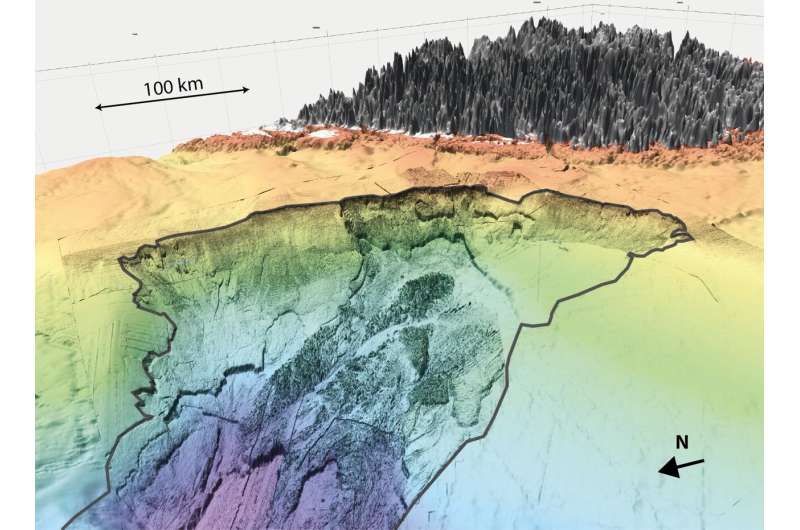This article has been reviewed according to Science X's editorial process and policies. Editors have highlighted the following attributes while ensuring the content's credibility:
fact-checked
peer-reviewed publication
trusted source
proofread
Reassessment of Storegga event: Second major landslide recognized

The Storegga event is one of the largest submarine landslides known in the world and is located off the coast of Norway. It occurred about 8,150 years ago, after the end of the last ice age, and triggered a massive tsunami that devastated the coasts of the North Atlantic and what was then the North Sea.
Previously, it was assumed that the slide displaced all of the sediments deposited during the last ice age, along a distance of about 300 kilometers. The volume of sediments moved during the slide has been estimated at around 2,400 to 3,200 cubic kilometers—a mass that would be enough to cover all of Germany with seven to nine meters of sediment.
Now, scientists from GEOMAR Helmholtz Center for Ocean Research Kiel and the University of Bergen, Norway have discovered that much of the seafloor sediment had moved 12,000 years earlier, after the peak of the last Ice Age. Thus, the Nyegga landslide, named by the researchers after the Nyegga area where they discovered the first evidence of the event, had already occurred about 20,000 years ago.
The geophysicists and geologists are able to demonstrate that about one-third of the material that slid, about 1,000 cubic kilometers, can be attributed to the Nyegga landslide. They published this surprising finding in the journal Communications Earth & Environment.
The Storegga landslide is therefore smaller than previously thought. Above all, however, submarine mass movements on the central Norwegian shelf are more complex and more frequent than previously thought. Conventional wisdom was that such large submarine sope failures occurred in connection with glacial cycles. According to this view, the unstable material deposited by the melting glaciers was removed by a single landslide and transported into the deep sea. This assessment must now be reevaluated.
"The Storegga event is one of the best-studied mega-slides in the world, and much of our understanding of large-scale landslides and related tsunami generation can be traced back to it," says Dr. Jens Karstens, marine scientist in the Geodynamics Research Unit at GEOMAR and lead author of the study.
"The results of our study show that some previous concepts might be too simplistic and are therefore of great importance for the assessment of geohazards related to landslides at continental margins."
The new findings are based on ship-based echosounder surveys collected during a 2012 research cruise and the examination of dozens of sediment cores at the University of Bergen.
Age dating and sedimentological investigations revealed unusual depositional profiles in seven of the sediment cores that could not be explained by the previous landslide history. Evidence of an earlier landslide event in the echosounder data has now allowed the researchers to explain the depositional layers with the Storegga event and the much earlier Nyegga landslide.
Seismic reflection surveys independent of the study show the deposition of a variety of large landslide events in deeper sedimentary layers. Further research is now needed to provide a more precise geological understanding of these older events and better assess the hazard potential of large submarine landslides.
More information: Jens Karstens et al, Revised Storegga Slide reconstruction reveals two major submarine landslides 12,000 years apart, Communications Earth & Environment (2023). DOI: 10.1038/s43247-023-00710-y
Journal information: Communications Earth & Environment
Provided by Helmholtz Association of German Research Centres




















